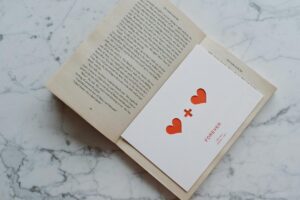What do Harry Potter, Princess Bride, Game of Thrones, and Leap Year all have in common?
No, only two of them have cult like followings…
The correct answer is they were all filmed in Ireland! Never been there? Its dizzying 300 foot cliffs, ancient fortresses, battle worn castles, and stunning green pastures were incredible!
Why was I there? In search of the leprechauns of course. That, and with the high hopes of improving my accent…
I went for a week long writing conference hosted by the Ireland Write Tours. This year’s conference speakers were none other than the fantastic Lori Langdon and Heather Webb.
I’ve just spent the past few days drinking from the fire hydrant of writing knowledge. Having survived that, I wanted to pass on what I learned to any other writers embarking upon the most amazing and frustrating adventure of a lifetime.
Today’s post is about the advice Heather and Lori had on the art of the start.
Why does this matter?
Society has no patience.
Everyone wants not instant gratification, but simultaneous gratification. They want to watch that show right now on TV, while ordering something on Amazon Prime that will arrive within the hour, all while skyping a friend on their iPad, reviewing their Fitbit steps, and bossing Alexa around.
Heaven forbid the wifi go down because everyone’s multi-tasking lives would be in shambles. (I can attest to the level of devastation that ensues as this happened to me at work yesterday. I now have an apocalypse plan set in place).
Your readers have no patience either.
You have to hook them immediately or else, I fear, you’ve lost them to the interwebs forever.
Just like most things in life, first impressions count. You have to impress your reader from the get go. I love how Heather framed our task as writers:
“Think of it like a resume. You’re showing the good stuff right up front.” – Heather
This is the time to pull out all the stops! You may have a fantastic scene you are in love with on page 245 but if you haven’t shown your reader from the start you’re worth reading, no one will ever see it.
So, how to do that? Start with…
The hook

No, no, not that kind. Sorry, martial arts fanatic here.
Fun (but mostly scary) fact: your hook starts in the first sentence.
Or at least it should. In your very first sentence, your reader needs a compelling reason to keep going instead of picking up their phone and scrolling through TikTok or checking Facebook.
If you’re starting with a mundane activity, dialog, or something else otherwise boring, may the odds be in your favor! But I wouldn’t count on people sticking around…
One of my new awesome writing friends explained her book selecting process to me. If the cover is awesome, she’ll open it. Next, she’ll read just the first sentence. If she likes that, she’ll keep going. If not…
It’s over.
She’s not the only one. Within the first few sentences you need to hook your reader. They have to crave more. If you’re going to compete (and win) against major social media giants you have to beat them at their own game.
Social media platforms “hook” their readers by creating a sense of FOMO or in other words Fear Of Missing Out. “If I don’t scroll down a little bit further I might miss a life changing dog meme!”
So, can you do the same in your book?
Improving your first sentence
The first sentence is where you start showing the magic. Modest is NOT hottest when it comes to books. Don’t be afraid to show off a little!
The most important thing to remember here is don’t get too attached to whatever you write for that killer opening line.
I know. You spent a full hour on it and all your friends told you it was great. But here’s the thing, many times you won’t be able to write a worthy opening line until you’ve finished your first draft.
Why? Because it needs to be reflective of your tone and story and those come after the first draft.
In the meantime, what else can you do?
Use vivid language. This doesn’t mean you need to be the next Tolkien nor does it mean you should write page long paragraphs of prose. This is also genre specific but even if you’re writing middle grade fiction, use some colorful imagery.
Keep it snappy. Look out for overly complex sentences in the first paragraph. Make your first liner brief and memorable.
Most importantly, use the hook. We already talked about this. Enough said.
Set the stage

Ever had someone take a quick pass at your first chapter and totally miss the genre? “What? This is sci-fi? I totally thought it was romance novel.” Womp. Womp. No one wants that.
Only you can prevent this from happening. Your first chapter is critical in setting the stage for what type of book it is.
Here’s a quick checklist of things you need to have answered in the first few pages:
- Who’s the protagonist and what are they like? What’s their gender? Age?
- Why should the reader care about the protagonist? What’s their goal/motivation?
- Where is the story taking place?
- What’s the time period?
- What’s the tone? Is this light-hearted and funny? Suspenseful?
Did you answer those questions in your first few pages? Great! Now, let’s take a look at a few things not to do.
What not to do…
In your first few pages please spare the reader from:
- Long clunky sentences
- Heavy slang, dialect, or fantasy elements
- Information dump
- Dream sequences
- False sense of suspense
I think those should all be pretty self-explanatory except perhaps the last two techniques.
Lori and Heather suggested shying away from using dream sequences since they have been worn thin. Countless writer’s already use them and if you’re goal is to impress and stand out to your reader, you’ve already failed them with a dream sequence.
False suspense is never good and you shouldn’t be using it. What I mean by this, is withholding information that’s actually quite critical to understanding the story. Remember, you want to create FOMO, not an anxiety disorder.
Hopefully, these tips can help you as you work to craft a powerful start to your book. Thanks Lori and Heather for imparting upon us your wisdom!

*Sigh* Well, as all good things must, my time in Ireland has come to an end. I’m now back to the daily sauna treatment I call my car.
Until next time, Candace.
Exercise
Because I’m a huge fan of practicing what you preach, I’m going to start adding in a section at the end of my blogs where you (and I) can practice some of these things I talked about. So, courtesy of Heather and Lori, here’s today’s exercise.
Answer the following questions for your book:
- What’s gripping about your first line?
- Does it leave us with a question?
- Does your first paragraph leave us with a question?
- What’s the hook in your first scene?
- What’s your protagonist’s goal in the first scene?
- What clues do you use to indicate there is more to come for this character?
- Can you identify the opposing force of the antagonist in the opening scene?




